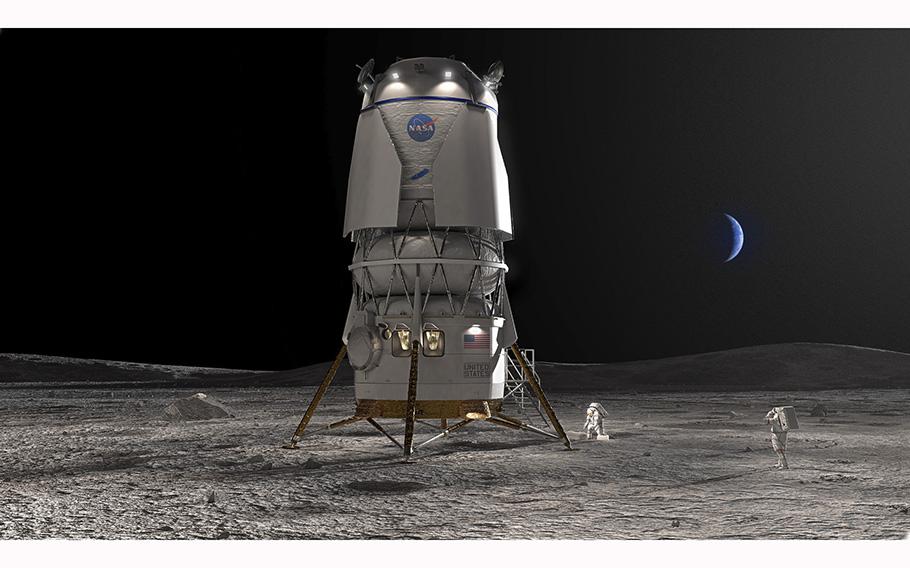
NASA on Friday, May 19, 2023, announced that it has decided to award a moon-landing contract to Blue Origin. (Facebook)
(Tribune News Service) — Billionaires Jeff Bezos and Elon Musk officially have something else in common as NASA announced its second moon landing contract for the Artemis program going to a large swath of aerospace companies led by Blue Origin.
“I’ve said it before. We want more competition,” said NASA Administrator Bill Nelson at a press conference Friday. “We want two landers and that’s better. It means that you have reliability. You have backups. It benefits NASA. It benefits the American people.”
SpaceX already is tasked to bring astronauts back to the lunar surface for the first time since 1972 with a version of its in-development Starship on NASA’s Artemis III mission currently targeting November 2025. Starship also has the contract for Artemis IV that isn’t slated until 2028.
The Blue Origin lander will be for Artemis V, which won’t be until at least 2029, and will feature the lander having to venture from the planned mini space station Gateway down to the moon’s south pole for stays up to 30 days.
“An additional different lander will help ensure that we have the hardware necessary for a series of landings to carry out the science and technology development on the surface of the moon, and that, what we do on the surface of the moon is in preparation for us to go to Mars,” Nelson said.
Blue Origin’s Blue Moon lander designed for four crew members is the major component for what is know as the National Team that also includes Lockheed Martin, Draper, Boeing, Astrobotic and Honeybee Robotics.
Lockheed Martin will get Blue Moon to and from Gateway with navigation from Draper and docking systems from Boeing. Astrobotic will handle cargo accommodations while Honeybee will do cargo offloading capability. One of its features NASA finds useful is its cargo capability, to bring up and down to the moon more than 44,000 pounds, and more than 66,000 pounds for a one-way trip such as delivering moon base infrastructure.
NASA’s award was slightly more than $3.4 billion and the National Team, with the majority coming from Blue Origin, is kicking in more than 50% of the overall mission cost.
“I think the announcement here today, where the successful bidder is putting in over 50% more skin in the game than what the NASA contract — fixed price contract — is quite significant,” Nelson said.
A test landing will happen about one year before the Artemis V mission said John Couluris, Blue Origin’s human landing systems program manager.
“We’ll be testing out full lander systems and the full architecture prior to any astronauts entering the vehicle and that will be roughly one year prior,” Couluris said. “Before that we have a number of test launches and landings.”
The lander is designed to fit within the fairings of Blue Origin’s in-development New Glenn rockets that will launch from Cape Canaveral Space Force Station.
Couluris said the teams have put a lot of effort into winning the NASA contract recovering from the initial loss to SpaceX in 2020.
“We learned so much from that and so much from the NASA collaboration,” Couluris said, noting it allowed them to “revisit our entire configuration and our architecture and be successful today. … This is step one, though. We have a lot to do before we successfully land and return astronauts.”
©2023 Orlando Sentinel.
Visit orlandosentinel.com.
Distributed by Tribune Content Agency, LLC.